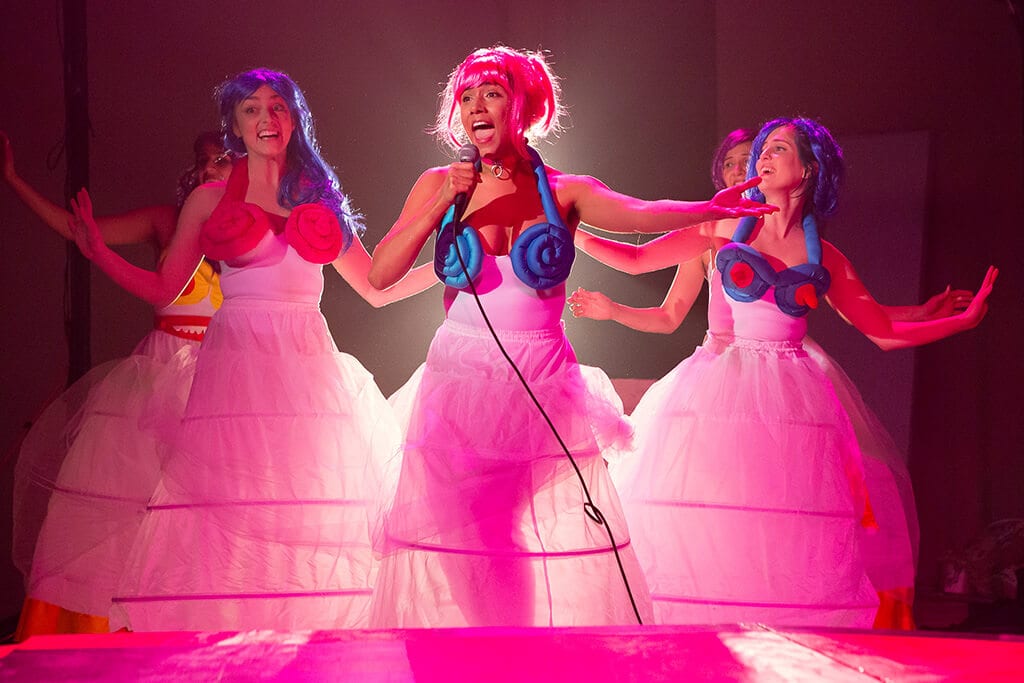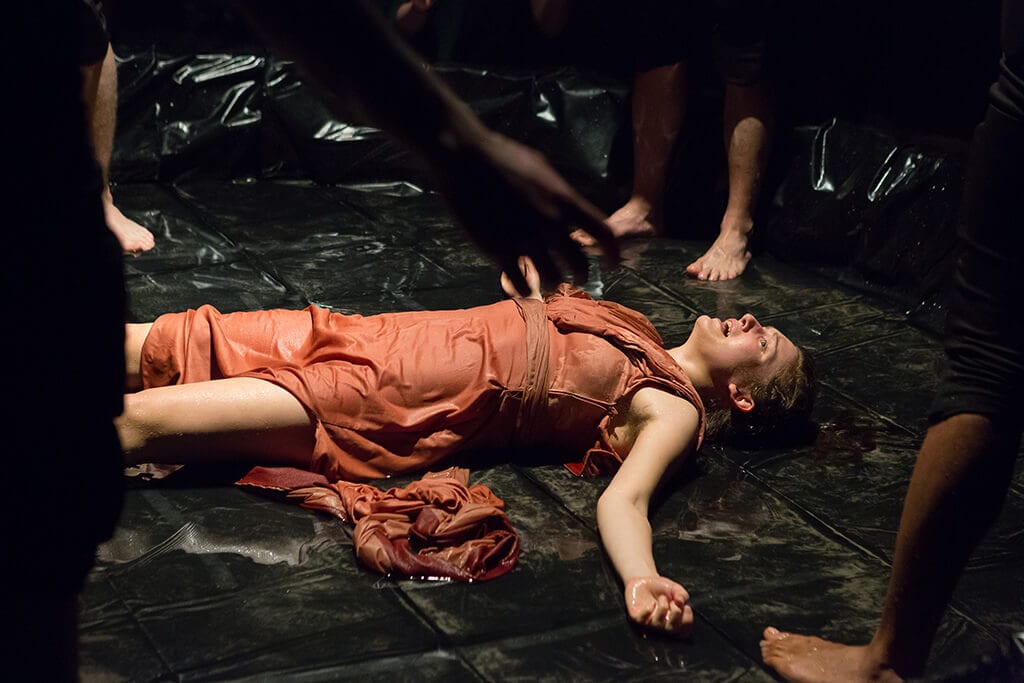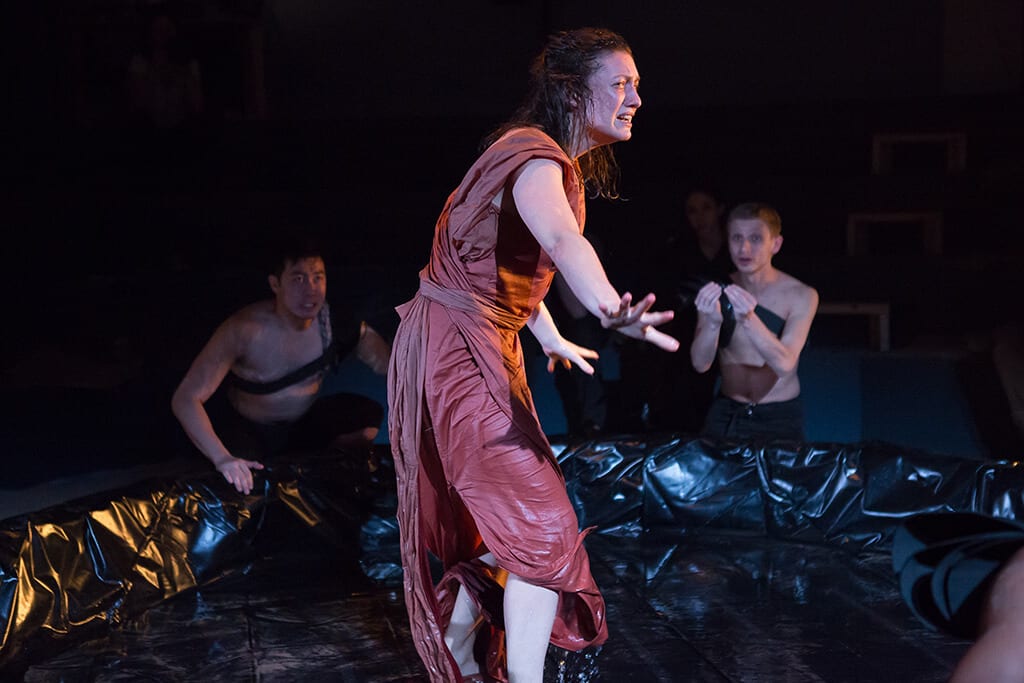When you decide to see a physical theater adaptation of Ovid at a Chelsea art gallery, you know you’re in for something unique. The show began unconventionally enough – the actors stood around the top of the amphitheater-like bleachers among the audience, introducing themselves by name. I was drawn in immediately by the strange transitions between the informality and the interpretive storytelling. It ended in much the same way – the fourth wall was unceremoniously torn down, and once again the actors appeared to us as fellow humans instead of mythical beings. The cast explained what was going to happen next, and we were told that we could choose when to end the scene and, consequently, the show. All that had to happen was for one of us to say, “Stop.” The idea of such power in my hands, as the lights went black on the show, left me exhilarated about what my role in the audience had been.
In fact, nothing about director Lilleth Glimcher’s Caenis is conventional. The show is performed in the Pace Gallery in Chelsea, and the room is so small that it creates an instant intimacy. In every way, the audience is incorporated into the action. We were subject to occasional splashing and sand in our shoes; we were served cake during a brief pause in the action while the cast constructed a platform for the next scene; we had our very seats – thin cushions wrapped in burlap that we were given at the entrance to pad the bleachers – demanded from underneath us.
With the combination of lighting, music, and frenzied choreography, the actors easily transform the bare gallery room into a mystical space. Wooden bleachers circle a stage layered with beach sand and a large black pool, ankle-deep with water, in the center of it all. As the actors ran or danced or shuffled around the pool, transformed into a veritable sea, their clothes or even their limbs brushed an arm, a shoe, or a crossed leg in the audience.
Caenis is taken from Ovid’s Metamorphoses: the story of a woman who, after being raped by Neptune, demands to be transformed into a man. Except for the beginning and the end, most of the story is dependent on the wild and sometimes violent choreography, preferring actor expression to dialogue. When the actors do speak, however, it is forceful, and all the more potent for breaking the pattern of the dance. Lucy Kaminsky shines as Caenis, embodying at once the powerful female, the helplessness of a victim, and the arrogant male. She is supported by a strong Greek chorus who dance in and out of a myriad of characters, grounded in mythology but with a modern twist. With eleven cast members, a small audience, and a set that feels almost too compact for its purpose, the show quickly becomes a sort of affair between the viewers and the players. It is easy to feel as though you are as much a part of Caenis’s story as the chorus.
A production that at first has the feel of a college black box theater quickly becomes an intense exploration of female empowerment and what it means to be a man versus a woman. Taking up a myth that is incredibly sensitive in today’s society which deals with rape culture and gender identity, Glimcher’s passion for the subject radiates through a fresh, entertaining, and compelling performance.



